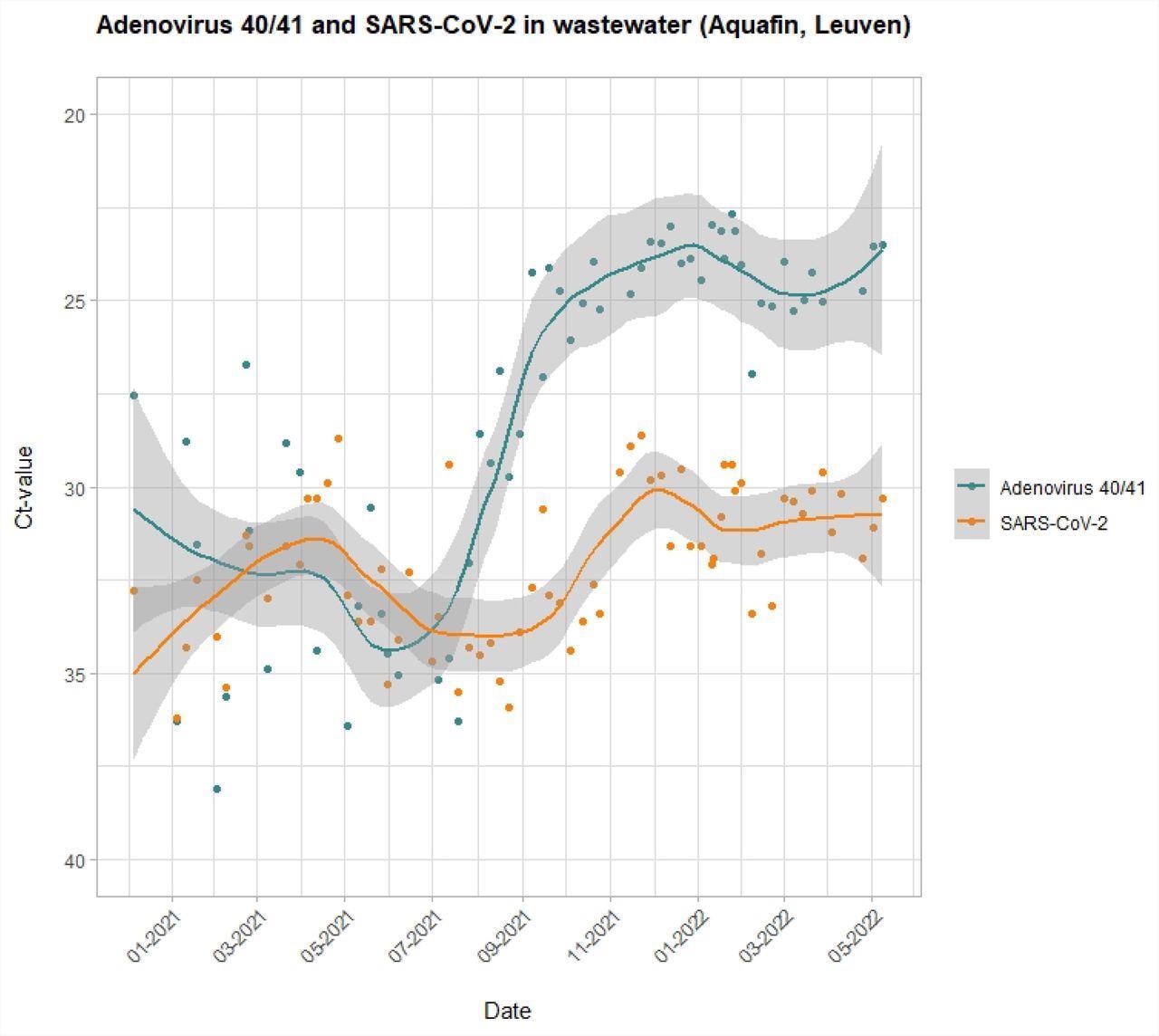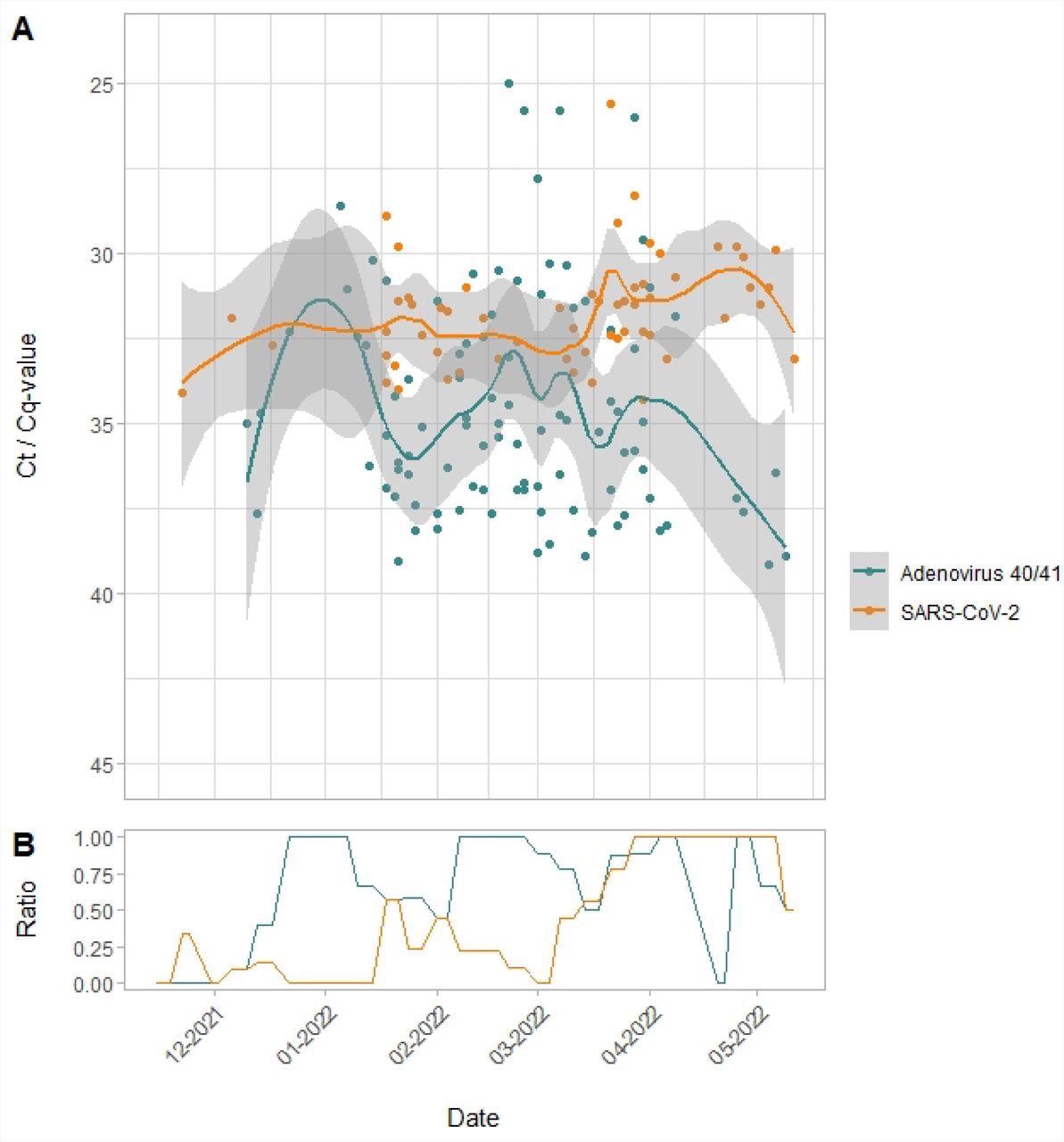To this end, they measured the circulation of AdV 40/41 and SARS-CoV-2 in the general population of Leuven, Belgium. Next, the team monitored the city’s wastewater systems and indoor air quality in daycare centers. Additionally, they examined the medical records of 12,672 children who visited a hospital between January 2019 and April 2022.
 Study: Environmental circulation of adenovirus 40/41 and SARS-CoV-2 in the context of the emergence of acute hepatitis of unknown origin. Image Credit: Corona Borealis Studio / Shutterstock
Study: Environmental circulation of adenovirus 40/41 and SARS-CoV-2 in the context of the emergence of acute hepatitis of unknown origin. Image Credit: Corona Borealis Studio / Shutterstock

 *Important notice: medRxiv publishes preliminary scientific reports that are not peer-reviewed and, therefore, should not be regarded as conclusive, guide clinical practice/health-related behavior, or treated as established information.
*Important notice: medRxiv publishes preliminary scientific reports that are not peer-reviewed and, therefore, should not be regarded as conclusive, guide clinical practice/health-related behavior, or treated as established information.
Background
There were several probable cases of severe acute hepatitis of unknown etiology in children under 16 years in Belgium. In fact, there were many more such cases in the World Health Organization (WHO) European Region, with three out of four cases in children under five years of age. Accordingly, 181 of 650 probable cases tested for AdV had 110 (60.8%) positive cases. Likewise, 23 of 188 cases were positive for SARS-CoV-2.
About the study
In the present study, researchers hypothesized that Adv and SARS-CoV-2 were physiopathological contributors to the etiology of severe acute hepatitis of unknown origin, especially in children under 16.
The team collected the wastewater samples weekly from a wastewater treatment plant in Belgium that covers eight municipalities inhabited by 11,5000 people. They used a time proportional automated sampler to collect 50 mL of wastewater every 10 minutes between December 2020 and May 2022.

Evolution of AdV 40/41 and SARS-CoV-2 circulation in the general population between December 2020 and May 2022. The intensity of the signal is captured by the Ct value of targeted PCR assays performed on wastewater.
Likewise, they collected the aerosol samples from two different settings depending on the children’s age group. For zero- to three-year-olds, they collected air samples from the area near the toilets in the crèche, and three- to six-year-olds, from the dining area of the kindergarten. Samples were collected for two hours, one to three times a week, between November 2021 and April 2022.
The researchers extracted viral ribonucleic acid (RNA) from wastewater and aerosol samples, which were then subjected to quantitative reverse transcriptase-polymerase chain reaction (RT-qPCR) testing to detect the presence of SARS-CoV-2 and AdV 41. They used Sanger sequencing for AdV subtyping on all the positive sewage samples. The team actively investigated the cases of hepatitis of unknown origin in four time-frames covering pre- and post-coronavirus disease 2019 (COVID-19) periods. In addition, they screened the medical records of 63 children (all under 16 years) who had elevated liver enzymes for all the time frames.

A: Evolution of Adv 40/41 and SARS-CoV-2 circulation in children day care centers between November 2021 and May 2022. The intensity of the signal is captured by the Ct / Cq value of targeted PCR assays performed on air samples. B: The ratio of positive samples to the total of tested samples is depicted in lower figure.
The team used the proportions test function to test the changes in the number of elevated liver enzyme cases and pathogen positivity between the study periods. Further, they used the Kruskal-Wallis test to test differences between groups of continuous variables and a Dunn’s test for pairwise comparisons between groups. Finally, they used the Benjamin-Hochberg method for multiple testing corrections with a false discovery rate (FDR) adjustment cut-off of less than 0.05.
Study findings
Between September 2021 and April 2022, the authors noted high levels of circulation of AdV 40/41 and SARS-CoV-2 in the general population. In addition, they identified four probable and five possible cases of non-severe non-A-E viral hepatitis of unknown origin in children under 16 years. All nine children developed hepatitis after October 2021 but recovered without requiring liver transplantation. While adenovirus infection was not associated with any case, the authors identified one case directly associated with SARS-CoV-2-infection. The child developed COVID-19 four days before the onset of hepatitis. Notably, they identified no cases of hepatitis of unknown origin in the four pre- and post-COVID-19 time-frames.
Sanger sequencing was possible for 57% of sewage samples. The authors noted that AdV was detectable in 65% of those samples, but only after the surge in cases of AdV 40/41 post-July 2021. The authors analyzed 158 air samples, of which 128 were from crèches and 30 from kindergartens. They detected AdV 40/41 for the first time in these samples on December 10, 2021. Subsequently, they consistently found AdV 40/41 and SARS-CoV-2 throughout the study period, concomitantly with hepatitis cases in Belgium.
Conclusions
Taken together, the study observations did not conclusively exclude or confirm the contribution of AdV and SARS-CoV-2 to the rise of acute cases of hepatitis in children. Therefore, even in cases where they possibly contributed, only a few cases progressed to severe hepatitis. Furthermore, the high community transmission rates of both AdV and SARS-CoV-2 and lower hospital admission rates of viral hepatitis cases of unknown origin in children between September 2021 and April 2022 further support the study findings. More importantly, the study highlighted the need for holistic disease surveillance in large populations to estimate secondary diseases, including hepatitis arising from a massive circulation of infectious viruses, such as AdV and SARS-CoV-2.

 *Important notice: medRxiv publishes preliminary scientific reports that are not peer-reviewed and, therefore, should not be regarded as conclusive, guide clinical practice/health-related behavior, or treated as established information.
*Important notice: medRxiv publishes preliminary scientific reports that are not peer-reviewed and, therefore, should not be regarded as conclusive, guide clinical practice/health-related behavior, or treated as established information.
Journal reference:
- Preliminary scientific report.
Environmental circulation of adenovirus 40/41 and SARS-CoV-2 in the context of the emergence of acute hepatitis of unknown origin, Elke Wollants, Els Keyaerts, Lize Cuypers, Mandy Bloemen, Marijn Thijssen, Sien Ombelet, Joren Raymenants, Kurt Beuselinck, Lies Laenen, Lore Budts, Bram Pussig, Katrien Lagrou, Marc Van Ranst, Emmanuel Andre, medRxiv pre-print 2022, DOI: https://doi.org/10.1101/2022.06.08.22276091, https://www.medrxiv.org/content/10.1101/2022.06.08.22276091v1